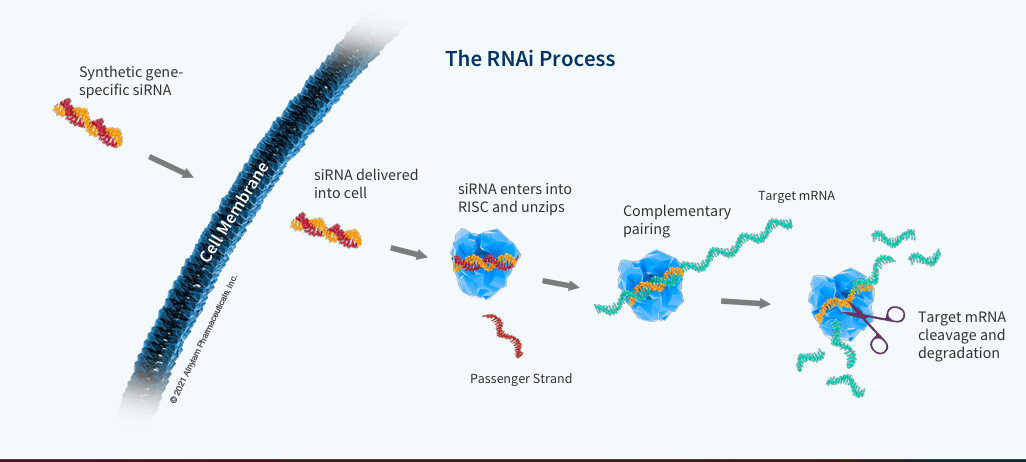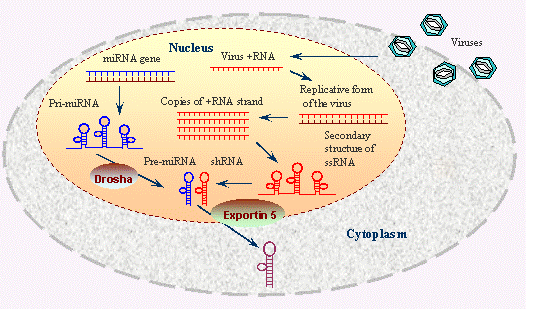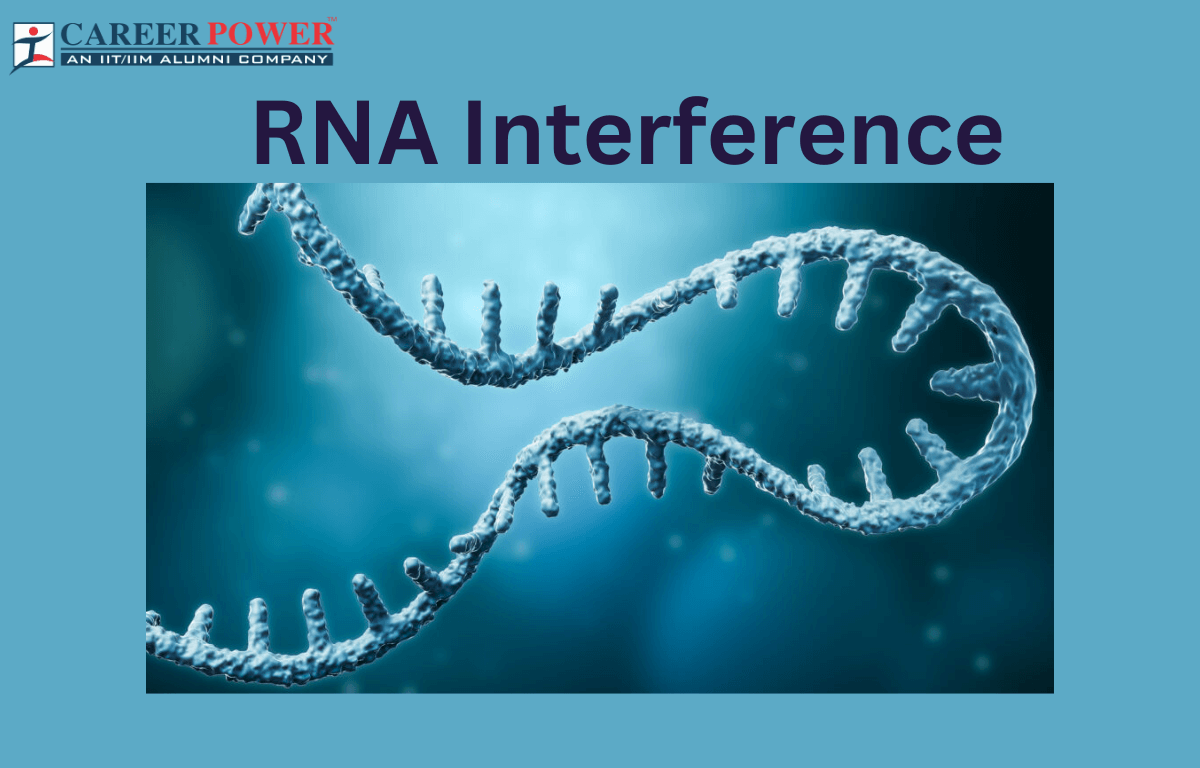As we all know, RNA is a complex genetic material of higher molecular weight, in almost all viruses and prokaryotic organisms. RNAi is RNA interference which is a phenomenon in which small strands of RNA molecules deactivate the gene expression process by targeting the mRNA molecules. In eukaryotic cells, it is described as a regulatory system that controls the activity of genes. In other words, it is also known as gene silencing. Andrew Fire and the RTI’s Craig Mello discovered the RNA interference mechanism of regulating gene expression and silencing specific genes. Scientists have found that RNAi has the power and capacity to search for any genetic defects inside human cells so that they can act on it to silence the expression of the particular defective gene.
RNA interference (RNAi) Definition
RNA interference or Post Transcriptional Gene Silencing (PTGS) is a biologically conserved and non-mutating mechanism in which double-stranded RNA molecules knock off the gene sequences in DNA strands to silence the expression of particular genes. The process was discovered by two American scientists, Craig C. and Andrew Z. The process is also known as the gene regulatory mechanism that inhibits the RNA transcript in two ways:
- Suppressing transcription
- Degrading the RNA produced
Steps Involved in RNA Interference
The mechanism in which small interference RNA (siRNA) triggers gene silencing by targeting complementary mRNA molecules for degradation. This phenomenon is revolutionising and is helpful for researchers to find a way of studying gene function. The steps involved are tabularized below and are further explained.

| Steps In RNA Interference | |
| Steps | Description |
| Production of Effective siRNA | Gene silencing has to be obtained in a most specific and potent manner. An effective experimental design employs the usage of two siRNAs to provide evidence that the obtained results are from flattening genes of interest. |
| Delivering siRNAs to target gene knockdown and reducing toxicity | Reproducible and potential delivery of siRNAs is essential for successfully knocking down the gene of interest. |
| Testing the efficiency of siRNA silencing | The effectiveness of siRNA silencing the target gene by exerting their effect on mRNA can be measured by a sensitive assay using real-time RT-PCR for validating siRNAs. |
| Examining the effect of target-silenced gene | Morphological, Enzymatic, Biochemical, and Immunological assays measure the gene silencing results. SiRNA-induced phenotypic changes are measured by western blotting to relate the phenotypic changes observed with amount of induced knockdown. |
RNA Interference Mechanism
The RNA Interference Mechanism follows a specific pathway which is described further in points. The cellular mechanism that uses gene’s own DNA sequence to turn it off using RNAi is known as silencing. In many organisms that includes animals, plants and fungi the process of RNAi is induced by dsRNA, double-stranded RNA. The mechanism of RNAi is as follows:

- The processing of long double-stranded RNA happens in the nucleus by an enzyme called drosha, which is an RNAse enzyme. An enzyme called dicer is used to cut or dice the shorter double-stranded RNA that comes to the cytoplasm into smaller fragments, 21 nucleotides long which are called small interference RNAs(siRNAs)or microRNAs (miRNAs).
- RNA induced Silencing Complex, termed as RISC complex involves the loading of siRNA or miRNA into the RISC complex consisting of Argonaute proteins thereby forming protein-RNA complex.
- The two strands of RNA separate from each other after binding of Argonaute proteins and single-stranded RNA complements with the nucleotides of mRNA.
- Now the binding promotes the cleavage of mRNA, thereby inhibiting the expression of genes by disrupting the protein synthesis process.
Applications of RNA Interference
The mechanism by which RNA interference occurs has its wider applications in various fields of science. The major applications are as follows:
Gene Knockdown
Since one of the main properties of RNAi is to knoc-off genes in the specific DNA sequence, it playes an important role in studying the functions of certain genes in cell culture of animals and some organisms. This phenomenon reduces the expression of target genes.
Functional Genomics
The technique is employed in studying of mapping of genes and annotation in various plant species. It is thereby used for identifying and studying of multiple plant species
Application in Medicine
Since siRNAs are useful in targeting specific genes, than the whole gene sequence it has major applications in the field of medicine. The synthetically produced small interference RNAs are useful in silencing or knocking off cancer-causing oncogenic genes, they are used to treat the dreadful disease of cancer. They are also accustomed to treating bacterial diseases, viruses, and parasites, relieving pain, and even sleep modulation.



 50 Vegetables Name for Kids in English a...
50 Vegetables Name for Kids in English a...
 Food Chain: Definition, Types, Examples,...
Food Chain: Definition, Types, Examples,...
 Human Respiratory System: Definition, Di...
Human Respiratory System: Definition, Di...













